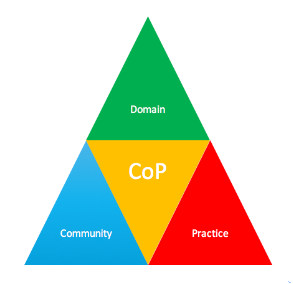TEL Communities
|
TEL Communities Definitions: Theoretical background relevant to technology facilitated social learning Research evidence: Systematic literature reviews on the theme of technology facilitated social learning |
Characteristics of communities of practice
Belonging to a CoP therefore gives increased agency to practitioners as it enables them to take collective responsibility for determining what they need to know and cuts across boundaries and formal structures. Key CoP features, then, are autonomy, informality, peer-to-peer learning and the existence of a structured framework within which the social learning takes place (Wenger, 2011). Furthermore, communities have been described as having a life cycle (Palloff and Pratt, 1999; Seufert, 2000). Seufert, for example, identifies four phases, content, intention, contracting and settlement. Read more about the notion of community in the context of education here: What is community? References: Palloff, R., & Pratt, K. (1999). Building learning communities in cyberspace: effective strategies for the online classroom. San Francisco: Jossey-Bass. Seufert, S. (2000). The NetAcademy as a medium for learning communities.Educational Technology and Society,3(3), 122–136. Wenger, E. (2011). Communities of Practice: A brief introduction.
|

 Wenger identifies three elements that need to be in place to form a CoP: the domain, the community and the practice. There is a shared domain of expertise or ‘collective competence’ that is valued by the group, which leads to the development of a repertoire of resources and strategies as the group solves problems together, seeks information from each other, reuses solutions and evaluates new developments in their field (Wenger, 2011, pp1-6)
Wenger identifies three elements that need to be in place to form a CoP: the domain, the community and the practice. There is a shared domain of expertise or ‘collective competence’ that is valued by the group, which leads to the development of a repertoire of resources and strategies as the group solves problems together, seeks information from each other, reuses solutions and evaluates new developments in their field (Wenger, 2011, pp1-6)